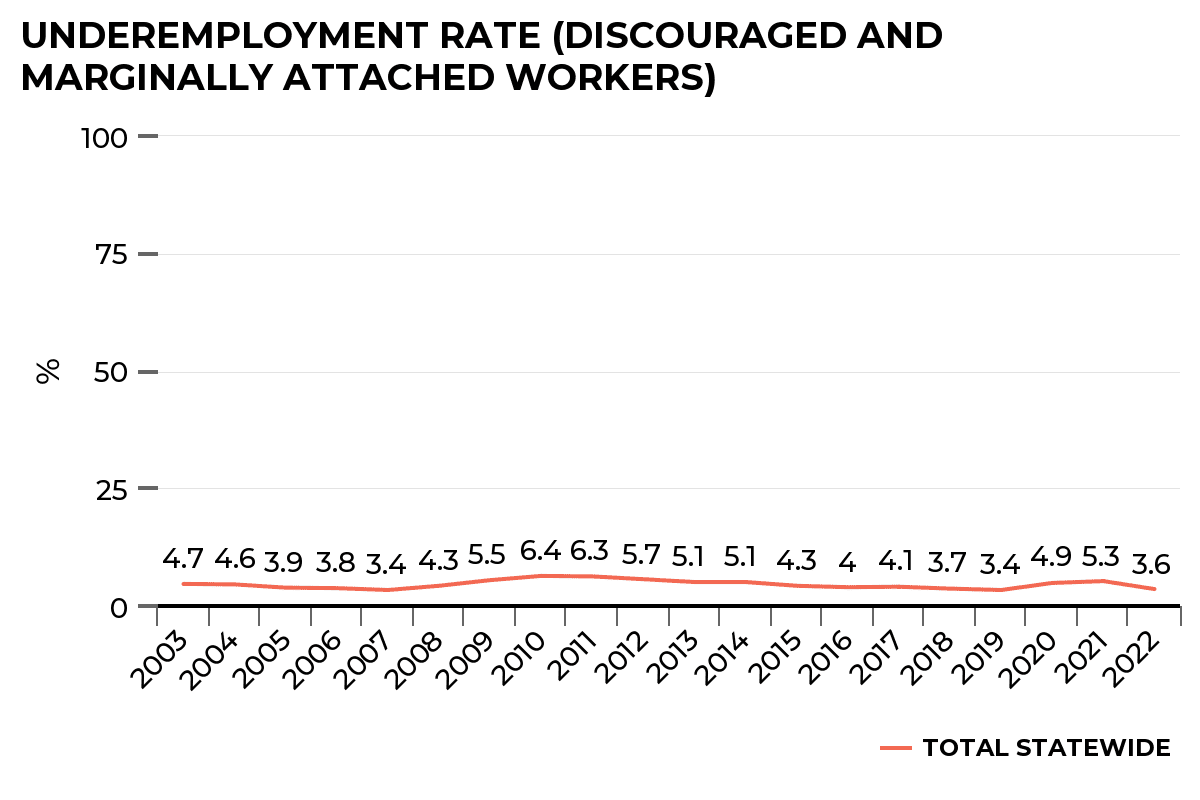Hot jobs market, understaffed employers: Strategic Framework
The hot jobs market, understaffed employees report is part of our blog series for Texas 2036’s Strategic Framework, which provides in-depth, cross-cutting data to inform key decisions about the most significant issues facing the state.
The Texas jobs market continues its hot streak of setting state employment records for a 12th consecutive month, adding 49,500 jobs in October 2022. Yet, at the same time, Texas employers continue to report labor shortages. An October 2022 survey from the Federal Reserve Bank of Dallas saw 63% of Texas companies respond that they were understaffed, with 51% actively hiring for new positions or replacements.

Simply targeting unemployed Texans will not be enough to meet employers’ workforce needs.
To date, the 2022 Texas civilian labor force — all people 16 years of age and older who are either working or actively looking for work — has averaged nearly 14.5 million workers every month, according to seasonally-adjusted unemployment statistics from 2012 to 2022. This is the largest it has been in the past decade. Of those workers, only 4% were unemployed in September 2022. Although we can still lower this unemployment rate to pre-pandemic lows of around 3.5%, Texas 2036 is highlighting another potential source of qualified workers — the underemployed.
In the second edition of our Strategic Framework, one of our new leading indicators for Workforce Needs, Goal No. 6, is the state’s underemployment rate. This indicator identifies Texans who are not counted in the state’s unemployment rate but have stated a desire to work. It includes what the Labor Department classifies as discouraged workers, marginally-attached workers and involuntary part-time workers — all of whom report being open to work but face barriers to employment.

Underemployed Texans, especially those who are discouraged or marginally-attached workers, can help grow the state’s labor force. Examples of these types of workers include those who want to work but have not looked for work over the past four weeks or those who are performing a minimum of one hour of work and receiving at least $20 as compensation per week, such as out-of-work engineers, construction workers or retail managers.
While there could be various reasons for their respective situations, Texas is already investing in strategies that can help address barriers to employment in a good-paying, skilled job. Fifteen million dollars were invested by the Texas Legislature in reskilling and upskilling programs that can provide Texans with in-demand skills within weeks or months rather than years.
The state also established a framework to boost the availability of work-based learning programs, such as apprenticeships, where Texans are directly connected with an employer for an opportunity to earn a wage while they learn important skills for their desired industry. And in the upcoming 88th Legislative Session, the Texas Legislature has an opportunity to dramatically transform the state’s community college finance system so that more Texans are earning a workforce-aligned credential of value — think certifications and degrees.
Through strategic investments, innovative public-private partnerships and a commitment to measuring the state’s progress through data in a transparent manner, we can provide Texas employers with the qualified talent they need and ensure our state’s economic prosperity. Simultaneously, it would also help those who are underemployed and empower them with the knowledge and skills needed to get a job with a self-sufficient, family-sustaining wage.
Texas 2036 will continue to advocate for data-driven policy solutions needed to secure Texas’ status as the best place to live and work. We’re excited to bring Texans along with us in this work through our new Strategic Framework.
